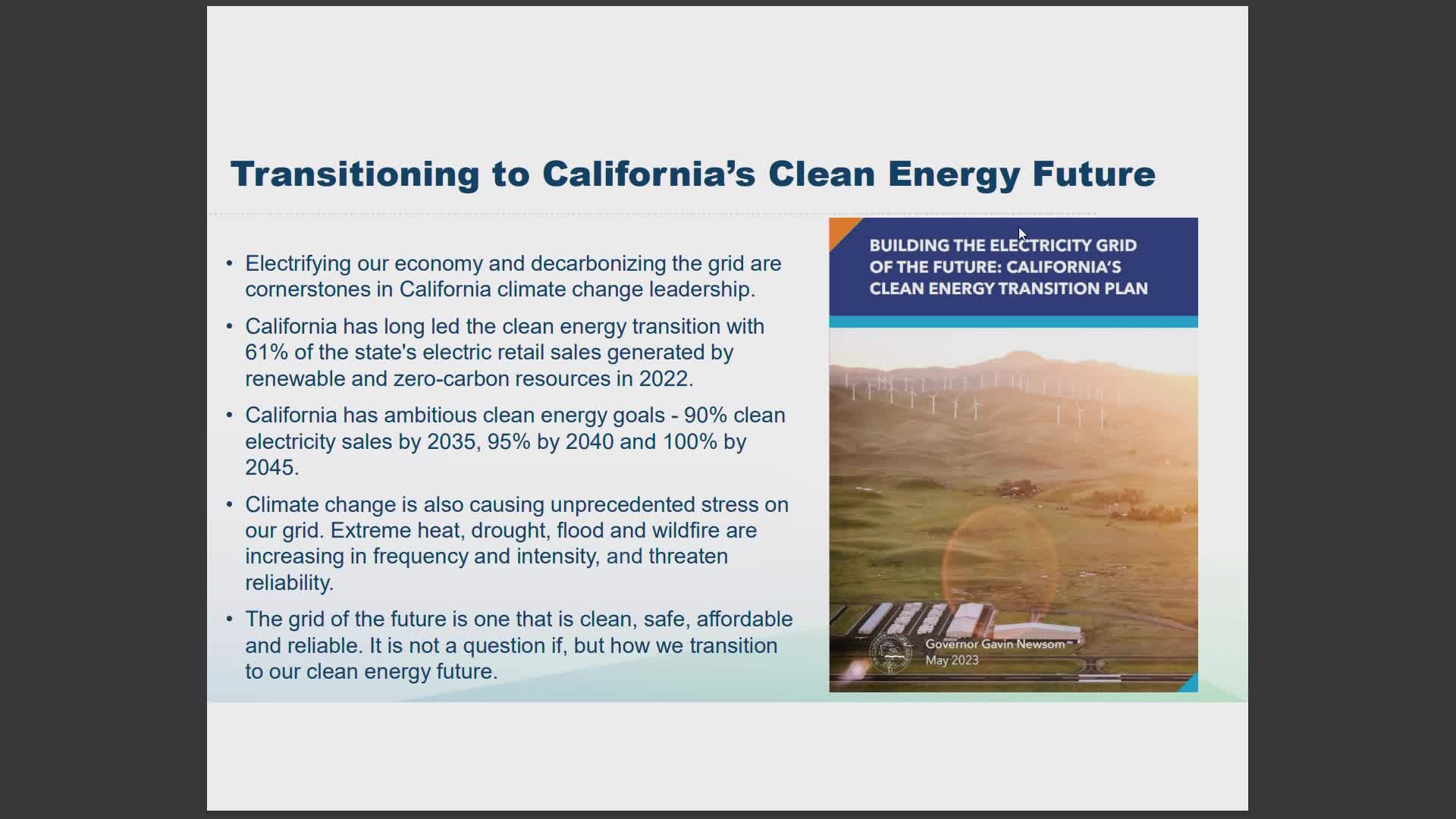California braces for climate crisis impact on energy grid
August 30, 2024 | Energy, Utilities and Communications, Standing Committees, California State Senate, Senate, Legislative, California
This article was created by AI summarizing key points discussed. AI makes mistakes, so for full details and context, please refer to the video of the full meeting. Please report any errors so we can fix them. Report an error »

In a recent government meeting, officials addressed the pressing challenges posed by climate change on the reliability of the electrical grid. President Reynolds emphasized that extreme weather events—such as heatwaves, droughts, floods, and wildfires—are becoming more frequent and intense, necessitating a transition to a clean, safe, affordable, and reliable energy future.
Vice Chair Gunda provided an update on reliability planning, outlining a layered approach that spans various time horizons. The planning process considers overarching climate goals extending to 2045, with a focus on demand forecasts and resource adequacy. Gunda noted that California has added approximately 20,000 megawatts of new resources over the past four years, which has helped mitigate potential shortfalls under standard planning conditions.
Despite these additions, officials acknowledged the ongoing risks posed by extreme weather events. The state currently maintains a strategic reserve of about 4,300 megawatts of contingency resources to bolster grid reliability during crises. Gunda highlighted the importance of this reserve, especially in light of past events, such as the 2020 heatwave and subsequent wildfires, which significantly impacted energy supply.
The meeting also underscored the need for improved planning processes and inter-agency cooperation to enhance grid resilience. The California Public Utilities Commission (CPUC) plays a crucial role in overseeing the planning of over 40 load-serving entities, which collectively serve about 75% of the state's energy load. Recent orders from the CPUC aim to procure new resources to meet customer demand and greenhouse gas emission targets.
As California continues to grapple with the effects of climate change, officials remain committed to proactive planning and resource management to ensure the reliability of the state's electrical grid.
Vice Chair Gunda provided an update on reliability planning, outlining a layered approach that spans various time horizons. The planning process considers overarching climate goals extending to 2045, with a focus on demand forecasts and resource adequacy. Gunda noted that California has added approximately 20,000 megawatts of new resources over the past four years, which has helped mitigate potential shortfalls under standard planning conditions.
Despite these additions, officials acknowledged the ongoing risks posed by extreme weather events. The state currently maintains a strategic reserve of about 4,300 megawatts of contingency resources to bolster grid reliability during crises. Gunda highlighted the importance of this reserve, especially in light of past events, such as the 2020 heatwave and subsequent wildfires, which significantly impacted energy supply.
The meeting also underscored the need for improved planning processes and inter-agency cooperation to enhance grid resilience. The California Public Utilities Commission (CPUC) plays a crucial role in overseeing the planning of over 40 load-serving entities, which collectively serve about 75% of the state's energy load. Recent orders from the CPUC aim to procure new resources to meet customer demand and greenhouse gas emission targets.
As California continues to grapple with the effects of climate change, officials remain committed to proactive planning and resource management to ensure the reliability of the state's electrical grid.
View full meeting
This article is based on a recent meeting—watch the full video and explore the complete transcript for deeper insights into the discussion.
View full meeting
